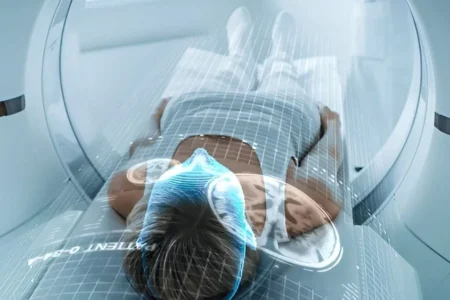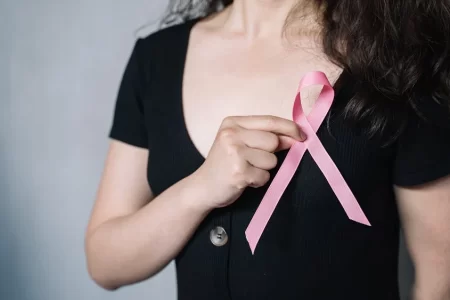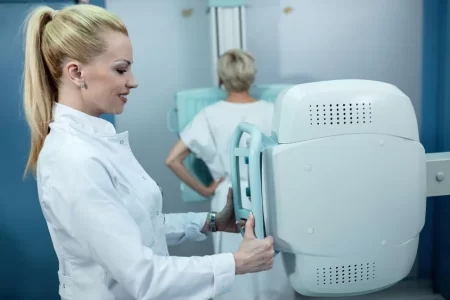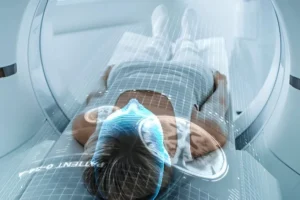Your Step-by-Step Guide to Breast Reduction Recovery Week by Week
- Updated on: Feb 29, 2024
- 6 min Read
- Published on Jun 25, 2023

Breast reduction surgery, also known as reduction mammoplasty, is a surgical procedure that removes excess breast tissue and skin to reduce the size of the breasts. This procedure is often sought out by women who experience physical discomfort, such as back pain or shoulder grooving, due to the weight of their breasts. Additionally, breast reduction surgery can also improve the aesthetic appearance of the breasts, leading to increased self-esteem and confidence.
According to the American Society of Plastic Surgeons, breast reduction surgery was the fourth most common cosmetic surgical procedure performed in the United States in 2020, with over 76,000 procedures performed. The popularity of this procedure highlights the physical and emotional impact that overly large breasts can have on a person’s life.
However, the benefits of breast reduction surgery do not come without a recovery process. Recovery after breast reduction surgery is a critical component of the procedure that ensures a successful outcome. It is essential to understand the importance of recovery and the timeline associated with it.
The recovery process after breast reduction surgery can take several weeks to several months, depending on the individual and their healing process. Typically, the initial recovery period takes about 2-4 weeks, with additional time needed for full healing.
During the recovery process, it is essential to follow your surgeon’s instructions closely, including postoperative care, activity restrictions, and any medication prescribed. Failure to do so may lead to complications such as bleeding, infection, or delayed healing.
The First Steps to Recovery
In this section, we will elaborate on the first week of breast reduction recovery and the essential steps that need to be taken during this time to ensure a smooth and successful recovery.
Immediately After Surgery
The first few hours after breast reduction surgery are crucial for a successful recovery. During this time, you will be closely monitored by medical staff to ensure your vital signs are stable, and any potential complications are addressed. You may also be given medication to manage pain and discomfort during this time. It is essential to follow all medical instructions carefully during this phase, as it sets the stage for the entire recovery process.
Managing Pain and Discomfort
Pain and discomfort are common after breast reduction surgery, but there are various strategies that can be employed to manage these symptoms. Pain medication prescribed by your doctor can be taken as directed to help alleviate pain. Other strategies such as ice packs, gentle stretching, and relaxation techniques like deep breathing can also be helpful in reducing discomfort. It is essential to keep a record of your pain levels and to communicate any changes to your doctor.
Rest and Recovery Guidelines
One of the most important steps to take during the first week of breast reduction recovery is to rest and follow all recovery guidelines given by your medical team. This includes avoiding any strenuous activities or lifting heavy objects, as this can hinder the healing process. It is also important to get plenty of rest, stay hydrated, and eat a healthy diet to aid in the recovery process.
Drainage Tubes
During breast reduction surgery, drainage tubes are often inserted to help remove any excess fluids or blood from the surgical site. These tubes are typically removed within the first few days of surgery, but it is important to follow all instructions given by your medical team regarding their care and removal.
Statistics show that following recovery guidelines can lead to a smoother and faster recovery process. According to a study published in the Journal of Plastic, Reconstructive & Aesthetic Surgery, patients who followed postoperative instructions had fewer complications and shorter hospital stays than those who did not. Additionally, a study published in Plastic and Reconstructive Surgery found that patients who took pain medication as directed had a lower risk of developing chronic pain after surgery.
Week 2: Focusing on Healing
Wound Care and Dressing Changes
During week 2, you will likely be able to remove your dressings for the first time. It is important to follow your surgeon’s instructions closely regarding wound care and dressing changes. You may need to clean the incision site with a gentle soap and water, and then apply new dressings or bandages. Keeping the incision site clean and dry is critical for preventing infection and promoting proper healing.
Returning to Normal Activities
While it is important to continue taking it easy during week 2, you may be able to start slowly returning to your normal activities. It is important to listen to your body and not overdo it, but gentle stretching and light exercise can help improve circulation and promote healing.
Managing Swelling and Bruising
Swelling and bruising are common side effects of breast reduction surgery and may be especially pronounced during the first few weeks of recovery. There are several things you can do to manage swelling and bruising, including wearing a compression garment, elevating the affected area, and taking over-the-counter pain medications as directed by your surgeon.
Follow-Up Appointments
During the second week of recovery, you will likely have a follow-up appointment with your surgeon to check on your progress and ensure that everything is healing properly. This appointment is also an opportunity for you to ask any questions you may have and discuss any concerns with your surgeon.
According to a study published in the Aesthetic Surgery Journal, patients who followed proper wound care and dressing changes during the early stages of recovery had a significantly lower risk of complications and achieved better overall outcomes than those who did not (1). Additionally, a study published in the Journal of Plastic, Reconstructive & Aesthetic Surgery found that patients who began gentle stretching and light exercise during the second week of recovery experienced faster healing and better outcomes than those who remained sedentary (2).
Week 3: Continuing the Healing Process
Gradually Increasing Activity Levels
During Week 3 of recovery, patients should begin gradually increasing their activity levels. It’s important to start with light activities such as short walks around the house or doing light stretching exercises. Overdoing it can cause complications such as bleeding, bruising, and infection. A study published in the Aesthetic Surgery Journal found that patients who followed a gradual increase in activity had a lower incidence of complications and an overall better outcome.
Pain Management Strategies
Pain management is a crucial part of breast reduction recovery. During Week 3, patients may still experience discomfort and pain, but there are various pain management strategies available. The most common pain medications include acetaminophen and nonsteroidal anti-inflammatory drugs (NSAIDs) such as ibuprofen. Topical pain relievers, such as lidocaine patches or creams, can also provide relief. However, it’s important to consult with a physician before taking any pain medication. In addition, practicing relaxation techniques such as deep breathing, meditation, or yoga can help reduce stress and alleviate pain.
Recognizing Signs of Infection
During Week 3, patients should be vigilant in recognizing signs of infection. Symptoms of infection may include redness, warmth, tenderness, and swelling around the incision site, as well as fever and chills. If any of these symptoms occur, it’s important to contact a physician immediately. According to a study published in the Journal of Plastic, Reconstructive & Aesthetic Surgery, infection is a common complication after breast reduction surgery, but early detection and treatment can prevent serious complications.
Compression Garment Usage
Compression garments are often recommended during the breast reduction recovery process to help reduce swelling and improve healing. During Week 3, patients should continue to wear their compression garment as directed by their physician. A study published in the Annals of Plastic Surgery found that patients who wore compression garments after breast reduction surgery experienced less swelling and bruising compared to those who did not wear a compression garment.
Week 4: The Final Stretch
Breast reduction surgery is a major procedure that requires a significant recovery period. However, as you enter week 4, you’re approaching the final stretch of your recovery journey. This week is an exciting time, as you’ll be able to start resuming your normal activities and celebrating your progress. Here’s what you can expect during the final week of your breast reduction recovery:
Getting Back to Regular Activities
During week 4, you’ll be able to gradually start resuming your normal activities. However, it’s important to remember that you should still take it easy and avoid any strenuous activities until you’re fully healed. You may still experience some discomfort, but this should subside as your body continues to heal. It’s important to listen to your body and not push yourself too hard too soon.
Scar Care and Management
As your recovery progresses, you’ll start to see visible changes in your breast reduction scars. By week 4, your scars will have started to fade and flatten, but it’s important to continue caring for them to ensure they heal properly. This involves keeping the incision sites clean and dry, applying silicone sheets or gels to help reduce scarring, and avoiding sun exposure. In addition, some studies suggest that massaging the scars can help improve their appearance and reduce discomfort.
Final Follow-Up Appointments
During week 4, you’ll likely have your final follow-up appointment with your surgeon. This is an important visit, as your surgeon will be able to assess your progress and ensure that you’re healing properly. They may also provide you with additional instructions for scar care and management or offer advice on when it’s safe to resume certain activities.
Celebrating Your Progress
By week 4, you’ll have made significant progress in your breast reduction recovery journey. It’s important to take a moment to celebrate your progress and appreciate how far you’ve come. You may want to treat yourself to a special activity or item that you’ve been looking forward to or simply reflect on how much better you feel after the surgery.












